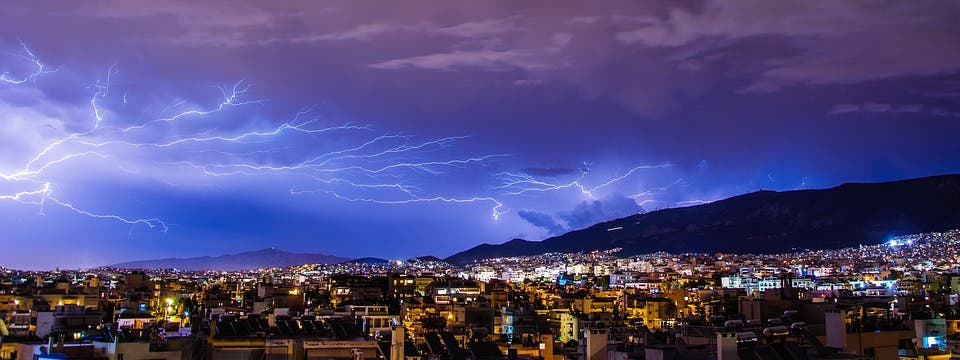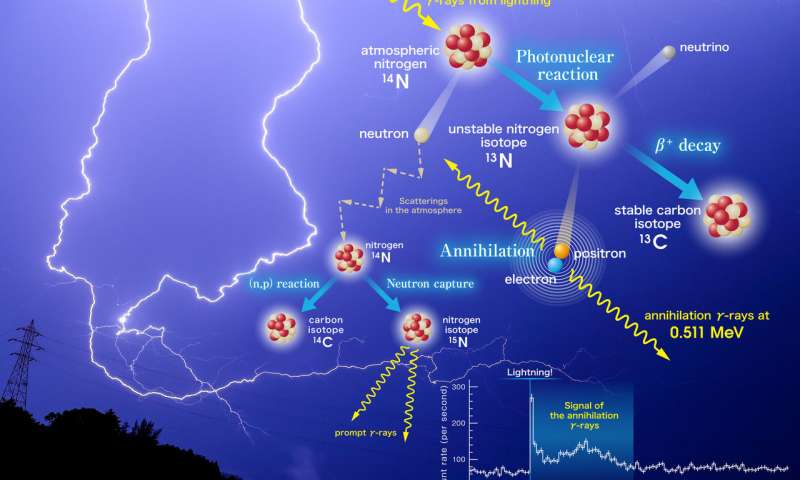Lightning is powerful enough to set off nuclear reactions in the atmosphere, a new study found. Japanese researchers report that the powerful electrical discharge produces gamma rays — the most powerful waves or radiation in the electromagnetic spectrum — which react with the air. The reaction produces radioisotopes and even positrons, the antimatter counterpart of electrons.

Scientists knew for some time that lightning and thunderclouds emit gamma rays but this is the first time someone demonstrated that they’re also responsible for nuclear reactions in the atmosphere. The findings were reported by a team from Kyoto University led by Teruaki Enoto.
In 2015, Enoto and colleagues set up gamma-ray detectors across Japan’s western coast which is often hit by lightning and thunderstorms. At one point their research was jeopardized by funding problems. They went to the internet for help where they convinced generous donors to crowdfund the research.
[panel style=”panel-info” title=”What is lightning” footer=””]Lightning is a giant discharge of electricity accompanied by a brilliant flash of light and a loud crack of thunder. The spark can reach over five miles (eight kilometers) in length, raise the temperature of the air by as much as 50,000 degrees Fahrenheit (27,700 degrees Celsius), and contain a hundred million electrical volts. Lightning may actually be the ultimate life bringer, though it may sometimes cause fatalities. The immense heat and energy discharged during a strike can convert elements into compounds that are found in organisms, so during the planet’s primal period lightning may have helped spur life – like a defibrillator.[/panel]
In early 2017, the scientists installed four detectors in Kashiwazaki city, which picked up a lightning bolt which struck the ground only a few hundred meters away. Upon analyzing the data, the researchers found they had recorded three gamma-ray bursts. The first only lasted for one-thousandth of a second, the second was a gamma-ray afterglow which faded off after a few milliseconds while the third was a prolonged emission that lasted about one minute.

The second afterglow was produced by lightning’s reaction with nitrogen from the atmosphere. Lightning is powerful enough to remove a neutron out of nitrogen. When the neutron is reabsorbed, an afterglow is produced. The prolonged emissions are the result of the unstable nitrogen atoms which release positrons. The antimatter collides with electrons which annihilate each other, producing gamma rays in the process.
[panel style=”panel-success” title=”How lightning forms” footer=””]Every day, some four million lightning strikes hit the surface of the planet. Despite this, how lightning – and subsequently thunder – is formed is not completely understood at a physical level. We know one thing for sure: it comes from clouds (dust, water and ice). Ice inside the cloud rubs against each other becoming electrically polarized or charged (the exact mechanism is a bit fuzzy, which is why the whole thing is debatable). The lighter ice will move upwards while the heavier ice will stay below separating the negative and positive charges.[/panel]
“We have this idea that antimatter is something that only exists in science fiction. Who knew that it could be passing right above our heads on a stormy day?” says Enoto.
“And we know all this thanks to our supporters who joined us through ‘academist’. We are truly grateful to all.”
There are now ten gamma-ray detectors on Japanese coast currently collecting data. Enoto hopes to gain even deeper insight into the fascinating atomic world that lightning triggers.
Scientific reference: Teruaki Enoto et al, Photonuclear reactions triggered by lightning discharge, Nature (2017). DOI: 10.1038/nature24630.
Was this helpful?



